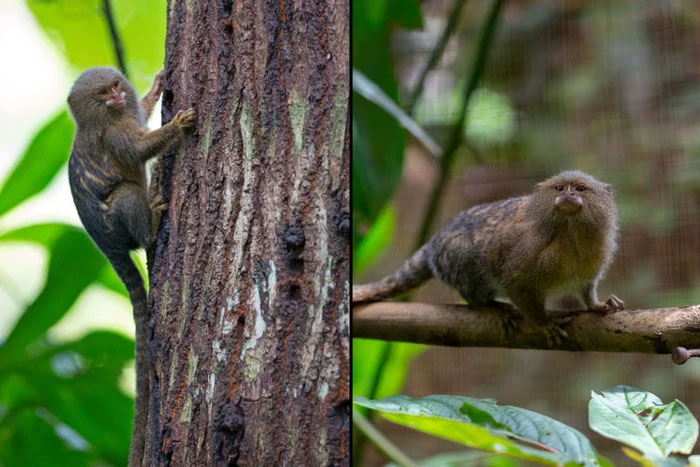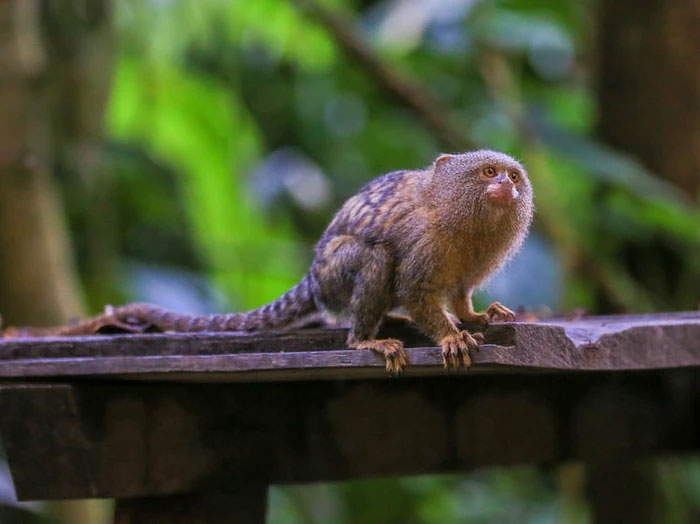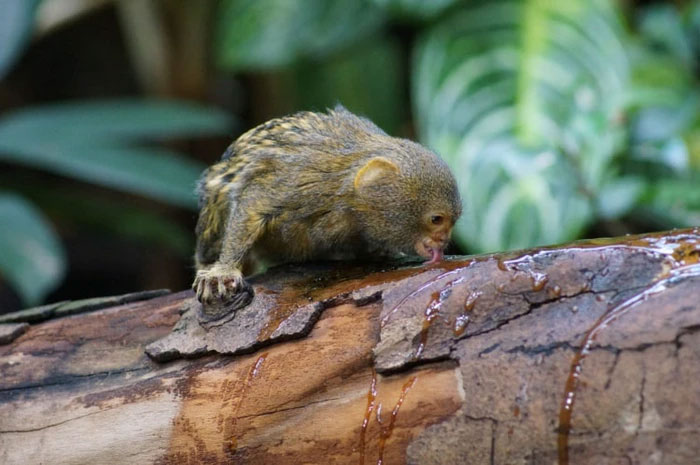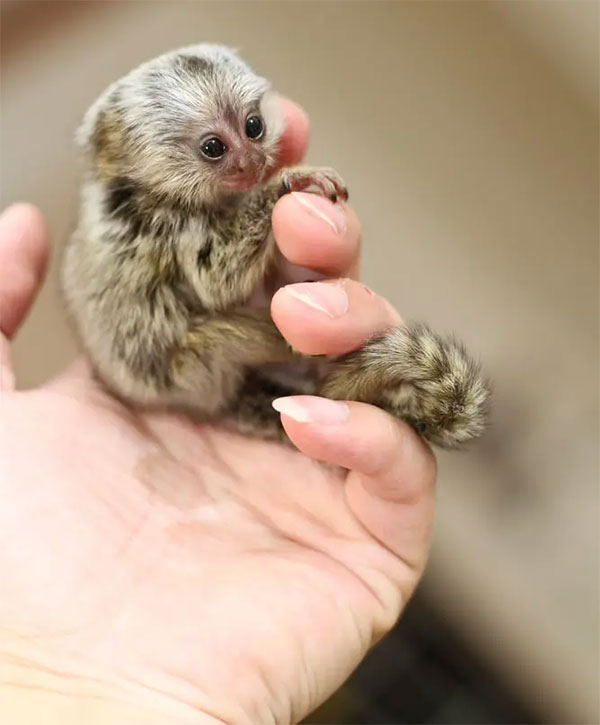Pygmy marmosets (Pygmy Marmosets), or "finger monkeys" are the smallest monkeys in the world. This monkey species, also known as the pygmy marmoset, belongs to the smallest primate order. In the wild, pygmy marmosets move very quickly, so it is difficult to see this type of monkey.

The Pygmy marmoset is endemic to South America, occurring in the western part of the Amazon basin. Their preferred habitat type is lowland, tropical evergreen forest with river floodplains. This tiny primate especially enjoys flooded forests for more than 3 months a year. They feed on tree sap by nibbling on tree bark and also eat fruit, insects, spiders, small birds, and eggs.
This tiny primate is also known for its ability to reproduce quick and gravity-defying movements, stick to tree branches, move expertly through the canopy, and more.
Primatologists spent years of observation and study, then reported their average measurements as weighing only 119 grams with a body length excluding the tail falling in the range of 11–15cm. What makes pygmy Marmosets even more special is that the adults have tails that are longer than their bodies.
The pygmy monkey is the smallest monkey in the world.
As their name suggests, pygmy monkeys are the smallest monkeys in the world. They are very sociable primates, often gathering in groups of 2-15 individuals. Members of this group are often related by blood, including the parents and their children.
With an average weight of about 119 grams, the marmoset is the smallest of the New World monkeys. Native to the Amazon basin and tropical forests of South America, they are now mainly found in Brazil, Columbia, Peru, northern Bolivia and Ecuador. However, they can be found in zoos worldwide.

Dwarf monkeys are very agile, flexible creatures. They can perform long jumps up to nearly 5 meters in the air as well as rotate their heads up to 180 degrees.
There are 11 different types of pygmy marmosets recorded but all are only 11–15 cm long, excluding tails, have claws instead of fingernails, have tactile hairs on the wrists , and lack wisdom teeth. That suggests they are more primitive than some other monkey species. They have special incisors that can easily gnaw through the bark of trees to find the sap, their favorite food source.
Monkeys gnaw holes in the bark (sometimes as many as 10 per day) and return to these holes several times a day to feed on the sap.
Being omnivores, their food consists of tree sap, vines, insects, spiders, nectar and fruit, among others.
Due to their exceptionally small body size, they remain easy targets for predators, such as raptors, wildcats, and even snakes. Their necks are very flexible and they can turn their heads backwards to detect predators.

Pygmy marmosets communicate with each other by conversing and humming in high-pitched voices. They can produce sounds so high that humans cannot hear them. They can also create faces to express emotions such as satisfaction, surprise, or fear by moving their lips, eyelids, ears, and fur around their face.
The gestation period of the mother pygmy marmoset is about 4.5 months and can give birth every 5 to 7 months. Dwarf macaques almost always have two cubs in a single spawn, but in zoos there have been reports of mothers giving birth to three or even four young in a litter.
Newborn chicks of this species are usually the size of a human thumb! The special thing is that after birth, the father monkey will take care of and carry the young for the first two weeks. During this time period, the father monkeys only bring them back to the mother when the young are hungry and need breast milk.
In addition, other members of the herd can also help with the care of the newborn chicks. When a little older, the young can be carried by the rest of the family until they are strong enough to move with the herd on their own.

Usually young marmosets are weaned and can join the herd by three months of age. They take about two years to grow into adults. They may then leave the herd to build a family of their own, or may stay to help raise other newborns.
Although this species is currently facing habitat destruction, this factor has not had a significant impact on their entire population. Their biggest threat is being trafficked as pets. Due to their small size, cute appearance and attractive face, they have become the coveted of many people.
However, we need to keep in mind that monkeys are not perfect pets like dogs or cats. Currently, the United States has banned the import of primates and most South American countries have also not allowed the export of primates.
- The poor dog is paralyzed and can’t stand up crying for everyone’s help and doesn’t leave him in this helpless moment
- The moment when the brave loyal dog fought to the last moment sacrificing himself to protect the safety of his owner from the attack of venomous snakes made us extremely emotional and couldn’t hold back his tears me
- The touching story of bubbles and her puppies will probably bring tears to your eyes
- Top 12 Animals With The Longest Tongue On Earth
- Top 15 animals with the most unique eyes in the world










